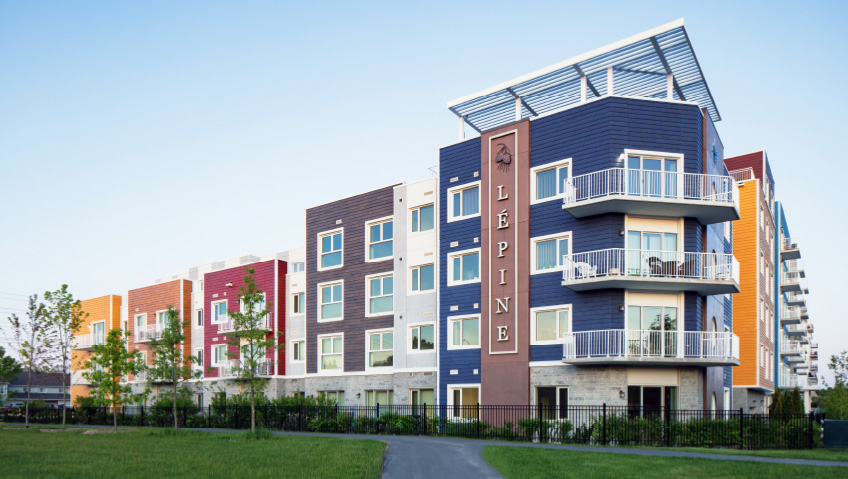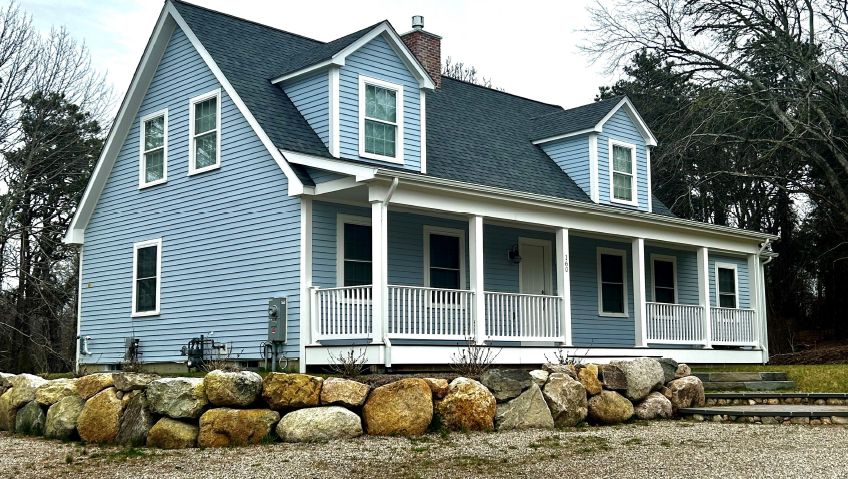Careers in the trades provide specialized knowledge and practical expertise while offering work experience, less time in the classroom, and the opportunity to make a good living.
With a high demand for skilled tradespeople both in Canada and the U.S., these jobs are essential to daily living whether through manufacturing, transportation, or construction, and while there are still widespread misconceptions that a skilled craft is merely a job and not a career, many trades demand technological expertise and extensive training. However, the serious shortage of youth in the trades has left many positions unfilled, with concern rising that this trend will persist as many long-time employees start to retire.
Enticing younger workers is imperative and Lépine Apartments, with more than 60 years of experience in the development of new rental markets in eastern Ontario, has recently created a series of television commercials to do just that. Airing during Hockey Night in Canada to expressly promote careers in the trades, Lépine aims to actively work to recruit more youth into a lucrative and satisfying career.
“Instead of advertising our products, which is building rental apartments, we’ve modified it to promote the construction industry and the various skilled trades there, showing them to a younger portion of the workforce,” explains President Francis Lépine. “Apprentices are the newcomers into the industry, so we’re putting younger faces in the ads and hoping children and young adults in this province realize maybe there’s something else.”
In the last 30 to 40 years, the government, the media, and the school system have pushed for computer knowledge and university education, he says, overlooking the potential and benefits of the skilled trades. Lépine’s television ads aim to rectify this by bringing more awareness to this area of education.
“This is something they encourage very young in school, asking kids, ‘what do you want to do when you’re older?,’” says Lépine. “Children have two years of kindergarten, then 12 years to get through high school, and then you’re telling them to go to university for another five—nearly two decades of a young person’s life sitting on a bench listening to other people telling you things. Basically, they’re coming out of school at 18 years old and nobody has taught them any trades.”
While a university education doesn’t guarantee any kind of career and is still pushed more heavily, Lépine isn’t convinced there’s still a stigma attached to the trade industry.
“The education industry is simply promoting its own industry,” he says. “The higher the degree of education [there is], that increases the workforce and the education system. The education industry is working for its own benefit, not necessarily for the total society and all the different people we need to run a society.”
While Lépine is working to help change that with its advertising, the crux of the problem still lies with governments and educators to continue to push for students to consider the trades, he says. In the 1970s and ‘80s, for instance, Quebec heavily promoted the building of all kinds of infrastructure projects and from hydro dams to highways and bridges, with industry workers at the forefront.
“People building these things spurred people to join the construction industry in that province,” he says. “I think this type of advertising is not too dissimilar than when the Armed Forces used to do serious recruiting aimed at young people.” Maybe the message being sent presently isn’t strong enough, he adds, especially when it comes to the dire need for a construction force in this country.
There’s also a basic lack of knowledge of the trades, with many people not realizing both its financial stability and the ability to learn while engaged in a paid apprenticeship.
“They can go and really start learning and making money right away from the start and they don’t have to spend five or ten years in school before being able to practice their trades,” Lépine says. “It does pay well, and the risk of not having a job in this industry is next to nothing.”
Targeting young people also includes women, says Lépine, who adds that the industry’s technological advancements have made it easier than ever for women to do the work. And when it comes to advertising, it’s also important for young girls and women to see themselves reflected, he adds.
“From doing electrical work to driving equipment, many of the skill sets that a woman can do are similar to a man. The industry is evolving at a good pace, and with the use of hydraulic or electrical equipment, a lot of the big, heavy, manual chores of the past also now have some software adaptation to them so everyone can actually perform most of the tasks.”
When not striving to attract young people to the industry, Lépine is busy with its own endeavours, some of which endorse the company’s dedication to ecological stewardship. For example, large solar panels have been erected on the rooftops of a number of projects, and although still in its first year, Lépine hopes the technology will prove beneficial, both environmentally and financially.
“Hopefully it works out well. I don’t expect it will make a big difference with consumption, but it should reduce it,” he says. “If everything goes as planned, it should be maybe 15 to 20 percent of electrical consumption at least in summer. And the quality of these panels is supposed to last for 25 years, so over the long run, what will be the cost of energy in 10 to 20 years from now?”
As Ontario has come up with a solution for the metering, charging, and billing of power to the consumer for apartment buildings or condominiums—similar to public charging stations which use credit cards with a QR code—Lépine has also been installing a number of charging stations at its projects.
“It’s a pragmatic solution and it’s financially feasible. We’ve been wiring underground garages for electric cars since 2010 and we’re going to add another 400 charging stations throughout a number of buildings.”
On the innovation side, the company has done some amazing work with prefabricated concrete walls as seen at The Normand in Kanata. At this all-prefabricated concrete apartment building, Lépine has created a maritime theme featuring bright, nautical colours that replicates wood siding—complete with woodgrain imprints—and white wood frames around the windows, recreating a typical maritime dwelling.
“It’s an innovation with the quality of the form liners and the placement of different reliefs with form liners, and an application of a five-step paint stain and sealer on the building,” Lépine explains. “We raised the bar still another step with precast, and we’re regularly pushing new frontiers of design to create more masterpieces out of concrete while still using the same quality techniques for long durability but also giving them a different flair.”
Looking ahead, the company will continue to raise the bar in construction while promoting Canada-based production. The pandemic exposed the dangers of relying on offshore supply chains for a wide variety of industries, which is why Lépine is committed to encouraging more made-in-North America products.
“This interdependence on global supply chains puts our countries at risk. We’re dependent on materials that come halfway around the world,” Lépine says. “We talk about sustainability and the greening of things, so why would be bring something from halfway around the world that is more environmentally friendly to get from closer by?”
The company is also encouraging the warehousing of materials to reduce dependence on time-sensitive deliveries of material.
“Construction is like manufacturing—it’s a production chain,” he says. “If you start missing a product here or there in the production chain, the whole thing bogs down eventually. So securing product is important and then having warehousing capacities to have a reserve of material to be able to supply jobs without being so time-sensitive.”
Lépine also stresses the importance of keeping industry within the country instead of “farming” everything out. “Becoming a consumer society will spell doom for a country in the long run,” he says. “No one can just buy, buy, buy, and not produce.”
This decision will also inevitably lead to healthier, thriving communities. “These manufacturers create more vibrant communities where they are, which gives the people in our communities work.”
This ongoing commitment to keeping labour, manufacturing, and supply local is a mainstay of Lépine’s business vision and one exemplified by his pride in Canada.
“We’re in the best country in the world; if you can’t make it happen here, where in the world are you going to make it happen?” he says. “I think often as Canadians we’re a little bit too modest or too shy, but at one point, we have to acknowledge a few things and then take the initiative and move forward.”
Moving forward in this industry means continuing to reach out to youth, educating them, and letting them know the benefits and importance of trades for the future. “Our workforce really is already here,” says Lépine. “Our next generation are here and they can do this. They can work this, but we need to guide them.”






